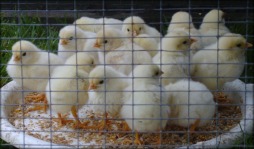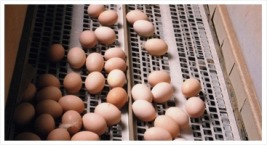Introduction

This is only a basic guide to keeping poultry and there are many books on the market with far more comprehensive guidance than is given here. However, we have researched many materials on the subject and come up with a detailed guide containing nearly all aspects on poultry rearing. This will be valuable especially to the small poultry farmers.
We hope you find this information useful. Feel free to Contact us for more information, any suggestions, to advertise with us or simply tell us what you think of our site. Also make sure you visit our blog for more interactive feedback.
Generally, your chickens have three basic needs:
§ Secure, clean housing
§ Space
§ Food and water
With that they will continue to produce eggs almost every day and provide hours of endless entertainment (and occasional frustration if you value your flower beds).
We hope you find this information useful. Feel free to Contact us for more information, any suggestions, to advertise with us or simply tell us what you think of our site. Also make sure you visit our blog for more interactive feedback.
Generally, your chickens have three basic needs:
§ Secure, clean housing
§ Space
§ Food and water
With that they will continue to produce eggs almost every day and provide hours of endless entertainment (and occasional frustration if you value your flower beds).
General Management
Feeding
Birds need feeds that give the necessary elements for body functions, including growth, and egg and meat production. This is a requirement that the free-range production system does not meet adequately. To attain a balanced diet, it is recommended that in addition to scavenging, a farmer should include protein supplements from one of the recommended cheap but quality sources. This can be provided either as a pre-mix or given through cafeteria system. Animals need carbohydrates for supply of energy and heat. In addition to kitchen waste, birds should be given feed rich in energy such as maize, millet, cassava, sweetpotatoes and sorghum.
Proteins
Proteins are body building blocks that are essential for growth and production. Feed birds on protein-rich non-conventional feed such as yeast, sunflower cake, heat-treated soya or ordinary beans, lucerne, peas, lupins, fishmeal (O, dried blood, rumen content, earthworms and termites. Termites are trapped by slightly watering leafy waste such as maize stover and rubbish collected from the compound and leaving them outside for 2 or 3 days.
Minerals
Minerals are trace elements found in plant seeds and grate. Minerals such as calcium that are important for bone and egg shell formation are found in fishmeal.
Vitamins
Vitamins are necessary for growth and reproduction. The rich, yellow pigment in the skin and egg yolk of indigenous chicken indicates presence of carotenoids from fresh vegetation such as grass and vegetables, the precursors of vitamin A.
Water
Water is often not provided because farmers assume that the birds find it around the homestead. Birds drink water from ponds and open tins during the rains but it is better to give them clean and fresh water all the time at a specific place). It is easy to medicate birds that drink from a central place.
Housing
Protective housing should be used in free-range poultry farming system to protect chicks from predators and bad weather. A good housing structure should be spacious, well lit, airy and dry, easy to clean, have perches for chicken to roost and protected from predators.
Cleaning and disinfecting
A chicken house should be decontaminated using fumes (fumigation) produced from chemicals such potassium permanganate and formaline to kill germs. The house must be tightly sealed so that the fumes remain in circulation for 18-24 h. These conditions are not possible for indigenous poultry houses. Contamination should be avoided by restricting entry into the house, quarantining all new chicken by separating them from the flock, keeping the house clean and wiping all surfaces with one part of jik in 3 parts of water. Keep non-concrete floors smooth by smearing regularly with cow dung and dusting with pesticides such as Sevin or Actelic to keep away vermin.
Birds need feeds that give the necessary elements for body functions, including growth, and egg and meat production. This is a requirement that the free-range production system does not meet adequately. To attain a balanced diet, it is recommended that in addition to scavenging, a farmer should include protein supplements from one of the recommended cheap but quality sources. This can be provided either as a pre-mix or given through cafeteria system. Animals need carbohydrates for supply of energy and heat. In addition to kitchen waste, birds should be given feed rich in energy such as maize, millet, cassava, sweetpotatoes and sorghum.
Proteins
Proteins are body building blocks that are essential for growth and production. Feed birds on protein-rich non-conventional feed such as yeast, sunflower cake, heat-treated soya or ordinary beans, lucerne, peas, lupins, fishmeal (O, dried blood, rumen content, earthworms and termites. Termites are trapped by slightly watering leafy waste such as maize stover and rubbish collected from the compound and leaving them outside for 2 or 3 days.
Minerals
Minerals are trace elements found in plant seeds and grate. Minerals such as calcium that are important for bone and egg shell formation are found in fishmeal.
Vitamins
Vitamins are necessary for growth and reproduction. The rich, yellow pigment in the skin and egg yolk of indigenous chicken indicates presence of carotenoids from fresh vegetation such as grass and vegetables, the precursors of vitamin A.
Water
Water is often not provided because farmers assume that the birds find it around the homestead. Birds drink water from ponds and open tins during the rains but it is better to give them clean and fresh water all the time at a specific place). It is easy to medicate birds that drink from a central place.
Housing
Protective housing should be used in free-range poultry farming system to protect chicks from predators and bad weather. A good housing structure should be spacious, well lit, airy and dry, easy to clean, have perches for chicken to roost and protected from predators.
Cleaning and disinfecting
A chicken house should be decontaminated using fumes (fumigation) produced from chemicals such potassium permanganate and formaline to kill germs. The house must be tightly sealed so that the fumes remain in circulation for 18-24 h. These conditions are not possible for indigenous poultry houses. Contamination should be avoided by restricting entry into the house, quarantining all new chicken by separating them from the flock, keeping the house clean and wiping all surfaces with one part of jik in 3 parts of water. Keep non-concrete floors smooth by smearing regularly with cow dung and dusting with pesticides such as Sevin or Actelic to keep away vermin.
Maintaining your Stock of Laying Hens

Your chicks are pullets and roosters now and you just want to keep them healthy, happy and alive.
Here are the tasks you'll need to continue to do as your hens grow and begin laying eggs.
Daily:
Check water and feed.
§ Collect eggs.
§ Spend some time with the flock observing them to ensure they look healthy.
Periodically:
Manage bedding
How you do this depends on the litter method you are using. For city and suburban flocks, you'll want to change the bedding in the coop at least monthly.
Rural and larger flocks can use the deep litter method. For this method, you begin with 3-4" of bedding and each month, or when droppings build up, you add more bedding until you have 6" or more of bedding total. With this method, twice a year you remove all the bedding and start over.
You can compost chicken litter for a season and use it in the garden. It is rich in nitrogen.
Freshen nest boxes
When the bedding in the nest box becomes soiled with poop or broken eggs, pull out the wet or soiled parts and put in fresh bedding material. This helps keep your henslaying in the nest boxes, as well as making the job of cleaning eggs easier.
Clean and sanitize waterers
Scrub the waterers with dish soap and warm water, rinse well, and sanitize with your choice of sanitizing solution, but the simplest is 1 part bleach to 10 parts water. The frequency of this chore depends on your personal germ philosophy. I don't clean mine frequently and my hens have always been very healthy. Others feel sanitizing as often as weekly is advisable.
Clean and sanitize coop
Once a year, remove everything from the coop and wash down all surfaces with 1 part bleach to 10 parts water. You should also do this in between flocks. Some people favor a sprinkling of diatomaceous earth (DE) in the coop to cut down on mites and keep the hens healthy. Get food-grade DE and don't worry if the hens eat it; it is perfectly safe and even good for them.
Keeping in the rhythm of these chores will keep your layers happy, healthy and laying plenty of farm-fresh eggs.
Here are the tasks you'll need to continue to do as your hens grow and begin laying eggs.
Daily:
Check water and feed.
§ Collect eggs.
§ Spend some time with the flock observing them to ensure they look healthy.
Periodically:
Manage bedding
How you do this depends on the litter method you are using. For city and suburban flocks, you'll want to change the bedding in the coop at least monthly.
Rural and larger flocks can use the deep litter method. For this method, you begin with 3-4" of bedding and each month, or when droppings build up, you add more bedding until you have 6" or more of bedding total. With this method, twice a year you remove all the bedding and start over.
You can compost chicken litter for a season and use it in the garden. It is rich in nitrogen.
Freshen nest boxes
When the bedding in the nest box becomes soiled with poop or broken eggs, pull out the wet or soiled parts and put in fresh bedding material. This helps keep your henslaying in the nest boxes, as well as making the job of cleaning eggs easier.
Clean and sanitize waterers
Scrub the waterers with dish soap and warm water, rinse well, and sanitize with your choice of sanitizing solution, but the simplest is 1 part bleach to 10 parts water. The frequency of this chore depends on your personal germ philosophy. I don't clean mine frequently and my hens have always been very healthy. Others feel sanitizing as often as weekly is advisable.
Clean and sanitize coop
Once a year, remove everything from the coop and wash down all surfaces with 1 part bleach to 10 parts water. You should also do this in between flocks. Some people favor a sprinkling of diatomaceous earth (DE) in the coop to cut down on mites and keep the hens healthy. Get food-grade DE and don't worry if the hens eat it; it is perfectly safe and even good for them.
Keeping in the rhythm of these chores will keep your layers happy, healthy and laying plenty of farm-fresh eggs.
